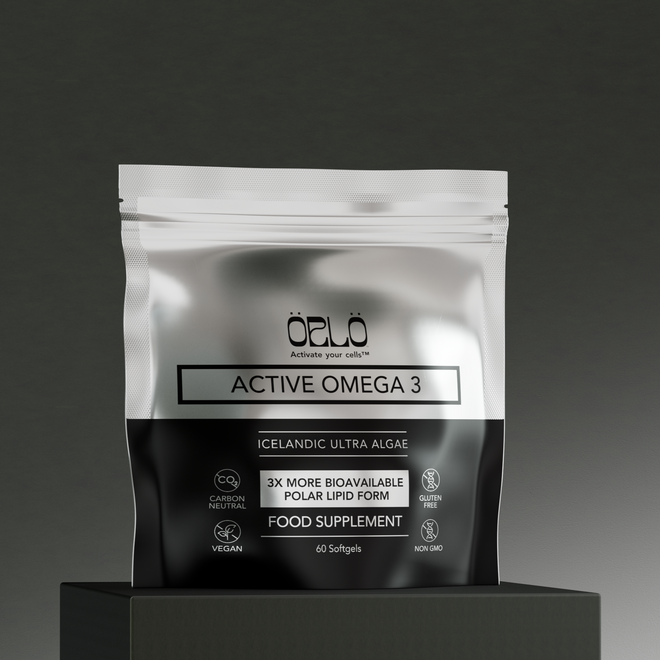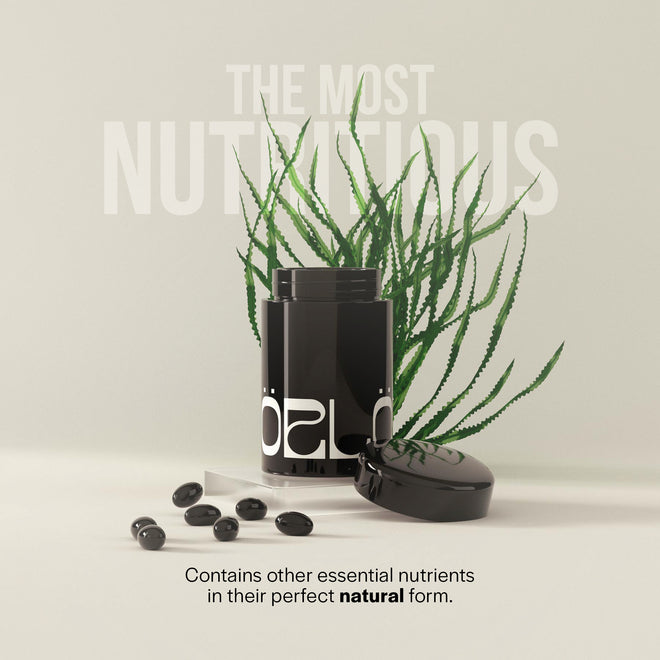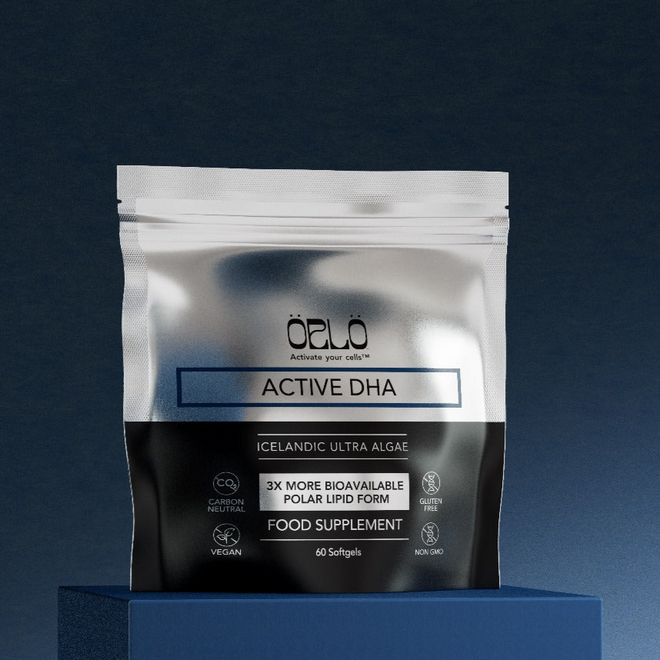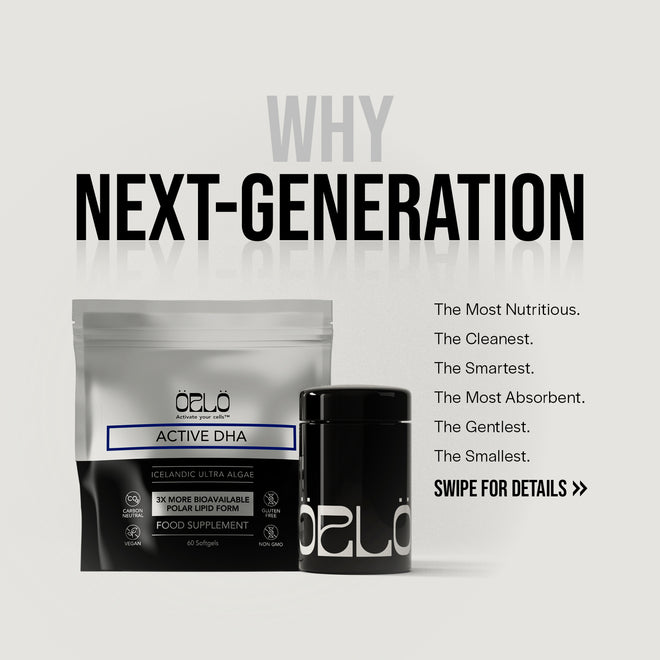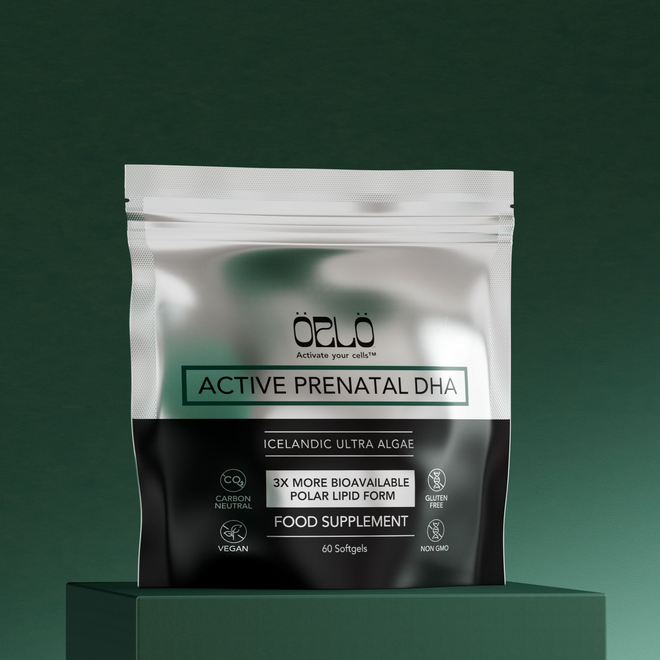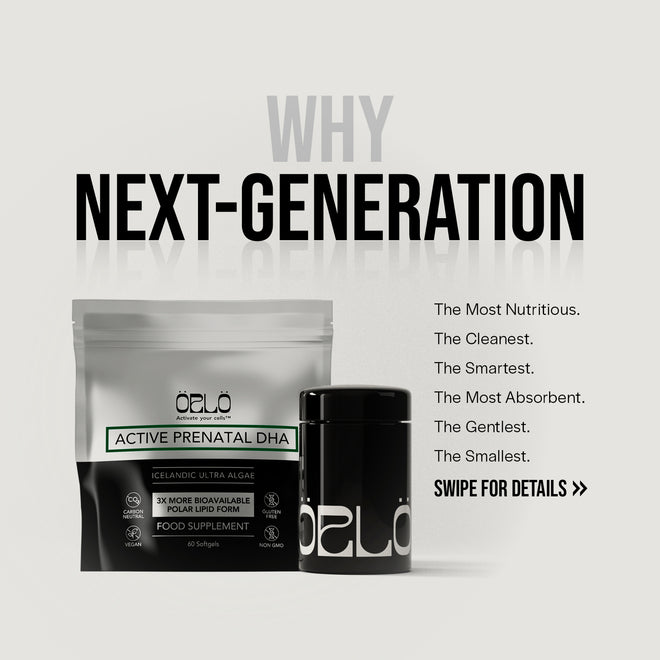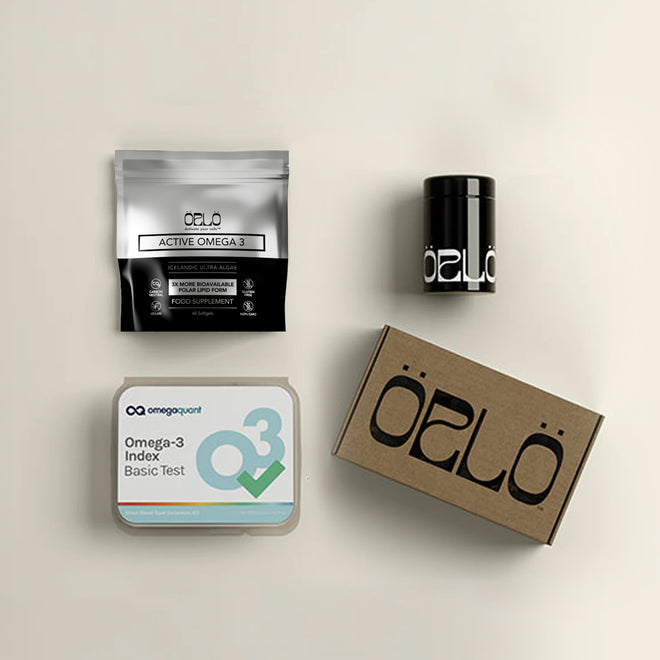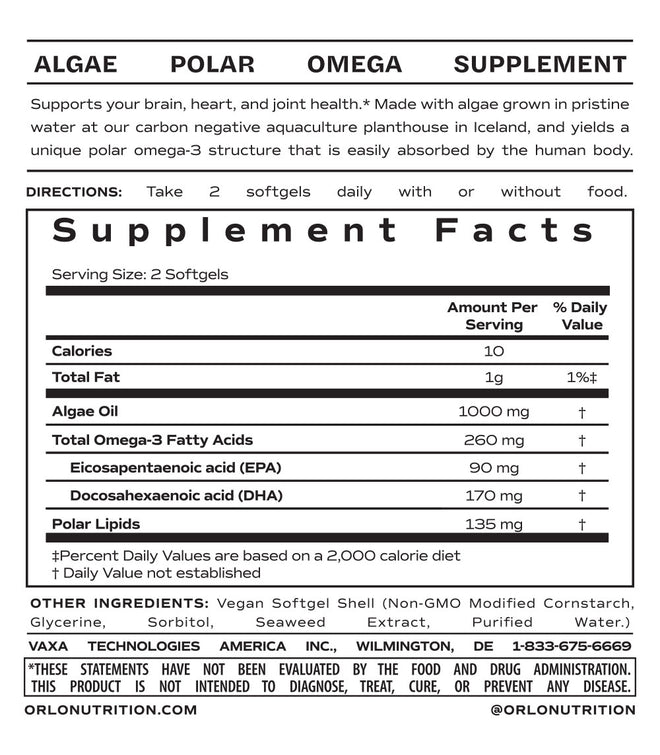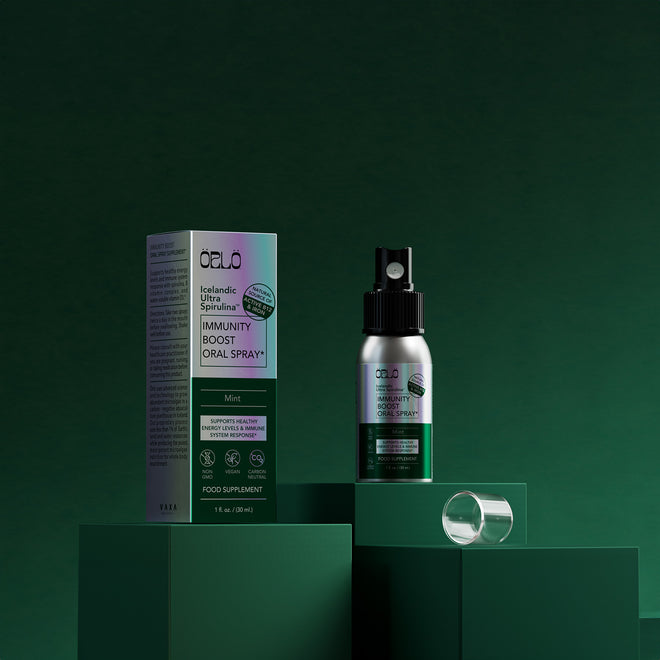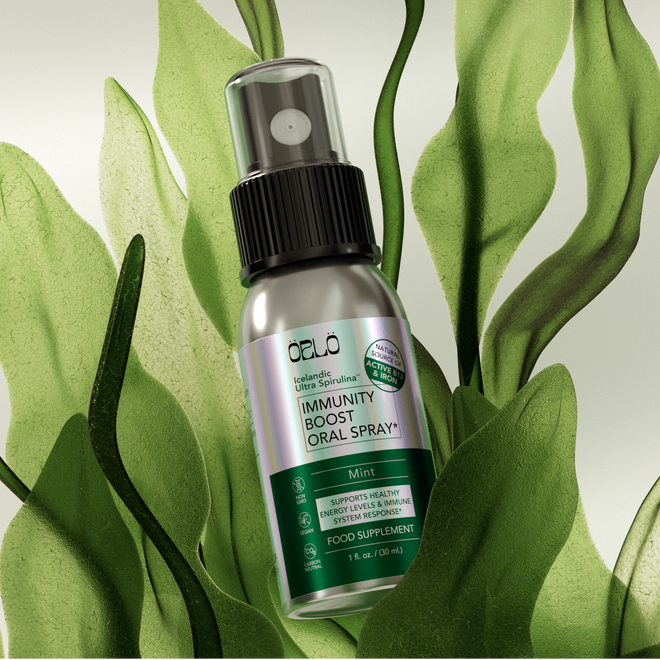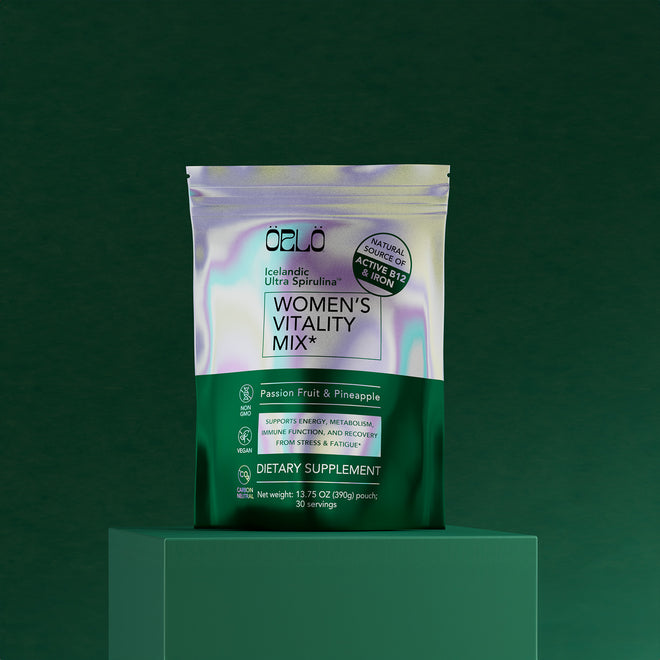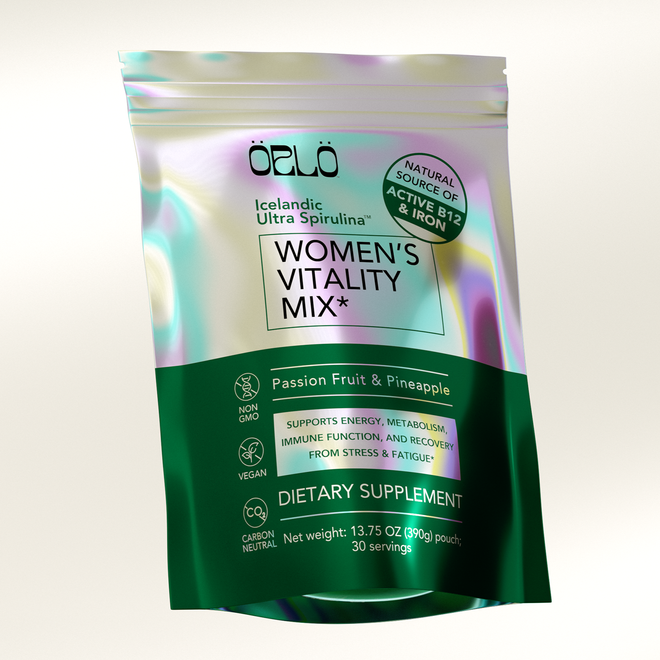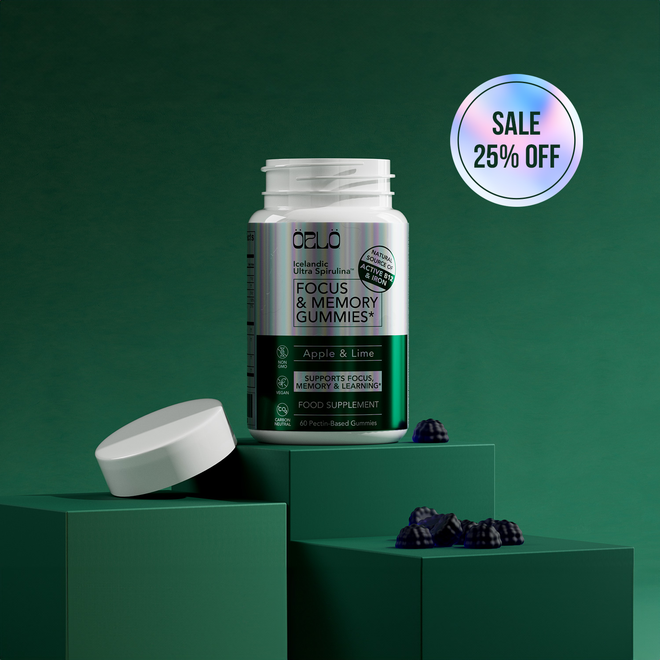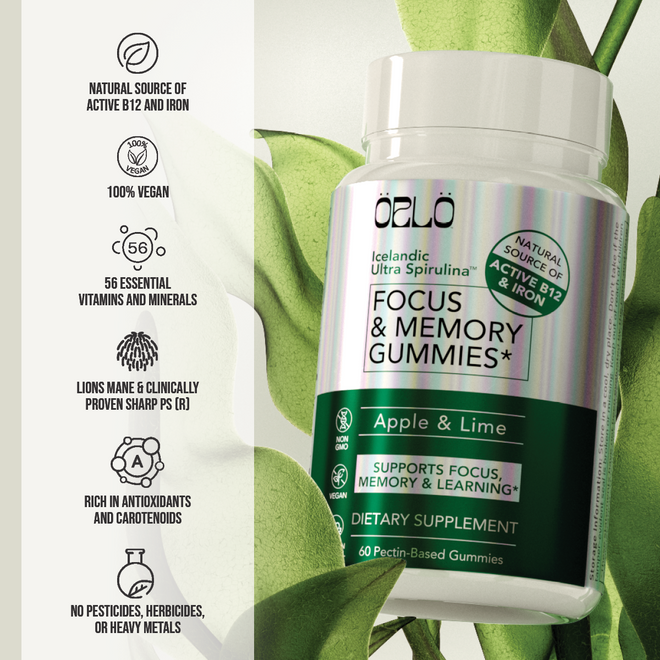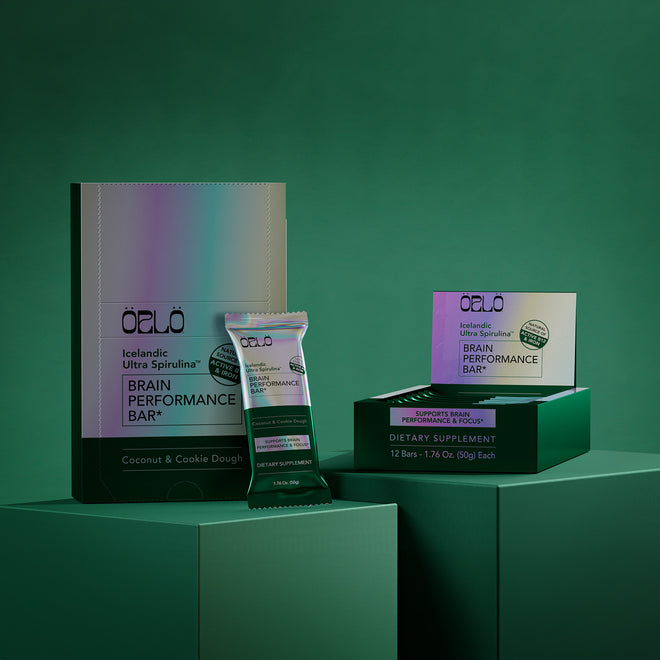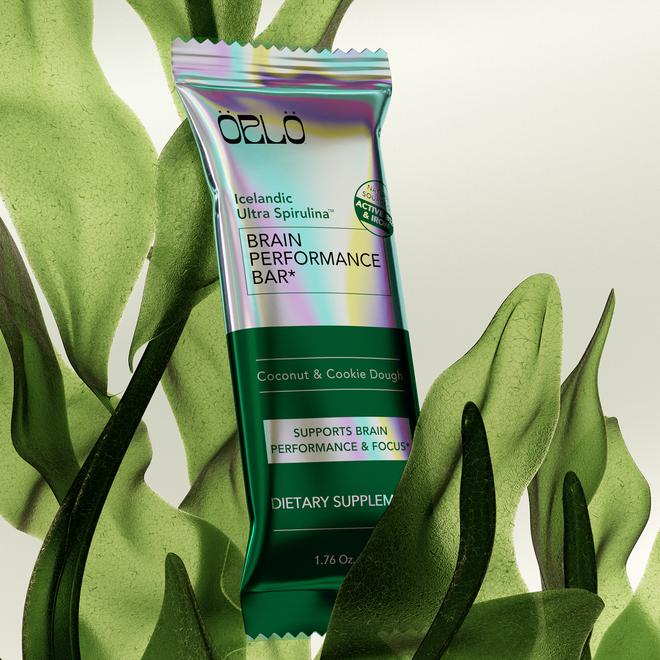25% Off - use code: HOLIDAYS
What You’re Missing Out On Not Consuming Omega 3 And CBDs With Stuart Tomc
Watch the episode here
Achieving your best health may lead you down a different path than your friends and family. But what if we told you that two things can actually help anyone reach optimal health and wellness? In today’s episode, Stuart Tomc shares practical knowledge on how and why consuming Omega-3 and CBDs can be critical to your success! Stuart is the Science, Regulation & Education at CV Sciences and has over 30 years of experience in the nutritional health food and supplements sector. Tune in to learn about Omega-3, CBDs, and learn how you can forge your unique path to ideal health!
Key Takeaways:
- Nutrition without compromise means really listening, listening not just to our bodies, but listening to the data.
- Always take only the right amount of nutrients. Follow label guidelines and optimize based on your needs.
- Nutrition is personal
- Importance of regularly testing to know what your body needs
- How the body benefits from Omega 3
- The tissue is the issue - and without absorption of nutrients into tissues, problems cannot be resolved
- Technology and intention come together to help makes us all healthier
- The endogenous cannabinoid system -- endo meaning inside the body
- Effects of exogenous cannabinoids -- exo meaning outside the body
- CBDs are good for the heart and so much more
- There's polymorphism in the gene that breaks down the endocannabinoids
Guest Social Links:
LinkedIn: https://www.linkedin.com/in/stuart-tomc-b114b2a1/
PlusCBD Oil: PlusCBD™
---
What You’re Missing Out On Not Consuming Omega 3 And CBDs With Stuart Tomc
How Omega-3 And CBD Can Optimize Your Health With Stuart Tomc, VP of Science, Regulation & Education, CV Sciences +PlusCBD
In this episode, I have a real treat in store for you as I get to introduce you to a longtime collaborator and friend, Stuart Tomc. Stuart is Vice President of Science Regulation and Education at CV Sciences™, makers of PlusCBD™. With over 30 years of experience in the nutritional health industry, he is regarded as an authority on functional foods and dietary supplements. I got to know Stuart when we both worked together in the field of Omega-3s putting Nordic Naturals on the map. Stuart left the Omega-3 field and joined CV Sciences™ specifically to help launch PlusCBD™ and be a part of the hemp CBD evolution or should we say revolution.
---
Stuart, welcome to the show.
Corinna, it's so good to see you. Thank you for having me on your show.
I feel like this has been a long time coming. We've been talking about doing this for some time. With a background like you have doing radio, being on immense media tours, talking on stage, even jumping up onto podiums to demonstrate the energy and vitality that you get taking Omega-3s or the other amazing supplements that you have worked to put on the map ultimately, I'm so thrilled to have you here so thank you.
It's such a pleasure to be here.
I want to start with a specific question that I like to ask many of my guests but when we get to talking about nutrition and health, I like to position that specifically around what this show is all about and take your interpretation. What does nutrition without compromise mean to you?
Nutrition without compromise to me means always reflecting on what I can do and what we can do to live a more healthy, robust and vital life. That might require changing and changing course. For example, for many years, I was a vegan and even close to a raw food person when I was much younger. That may not have been the ideal diet for me. Rather than being ideologically bound to my cause, I remain open. Nutrition without compromise ultimately boils down to remaining open so that you can allow the data and your own health experience to help dictate your health decisions.
Even though you and I have known each other for a long time, back in 2009, I ultimately learned that I had a thyroid problem and most of the products available don't work for me. One that comes from a porcine base, meaning it's taken from a pig, works well. Even if I ideologically wanted to be a vegan, I might have a hard time doing that because all of the synthetic hormones that are created make me feel my heart is pounding out of my chest and I'm about to have a heart attack.
Anxious and anxiety could go on and on about the feelings that I get in those cases. If I don't take the recommended drug application, I find that my body gets cold and I start to have health problems that relate to the function of my thyroid. To your point, nutrition often has to be very personalized and we need to listen to our bodies for what works best for us. Some people thrive on a high-carbohydrate diet. Others not so much. Others require higher protein and higher Omega-3 levels or higher fats overall.
I'd love for you to talk to me, as we dive into this subject a little bit more deeply, about your transition as you learned about the research and moved from wanting to stay exclusively focused on Omega-3s. How passionate you were about them and open your world to endocannabinoid research, which is CBD. A lot of money and a lot of time are spent on research about how the brain and our physiology work.
Thank you. Before we do that, I want to touch on what you said because we share something in common. I don't know if I've ever told you this but I also suffer from a thyroid condition. It's type two hypothyroidism. Like you, I was taking the bovine and then the porcine glandular material for my thyroid for many years. It was working and I felt great. All of a sudden, I started having some vision problems out of nowhere. I got very concerned.
One of our medical advisors here at CV Sciences™, in our conversation, was asking me what dietary supplements I'm taking. I told him what I was taking and he said, “Stop.” I said, “Stop what?” He said, “You need to go get some pure T3 and T4 and find an endocrinologist that you can trust. My father had the same issue that you did. After years and years of the animal tissue, his body started to create some antibodies,” which makes sense because you're taking living tissue, even if it's desiccated.
“All I did was switch my father to the appropriate amount of T3 and T4 and his vision cleared up immediately.” That was such a leap for me, Corrina. I was so married and ideologically wed to my glandular little pills. It made me feel so good that once, I went to a compounding pharmacist with the help of an endocrinologist. I'm lucky my doctor also practices Ayurveda. He's an MD but he'll also give me pulse readings at the same time.
I'm able to marry both of those thoughts together. That was a powerful experience for me and one of the many experiences where I learned about how, to your point, nutrition without compromise means listening. Listening not just to our bodies but listening to the data. Another quick story. I took way too much vitamin D when I was working for you. I don't know if you remember that all those years ago.
You end up with kidney stones, right?
I can't prove it but the doctors are fairly certain. My vitamin D levels were so astronomically high that when they came into the little room where I was sitting there with the schmuck, they had the IV drip in me and I'm shaking and cold. It was an intervention. I had a vitamin D intervention.
Share with the audience for a moment how much you were taking, consistently of vitamin D3.
50,000 IU a day for years and my vitamin D levels got beyond the north of 400. They might have been north of 600.
For context for everyone here, generally speaking, recommendations are you might take as little as 400 IU a day, perhaps 1,000 IU. Many of the supplements out there are 1,000 and some are 5,000 but a 50,000 dose is usually only given by prescription. In that case, taken once a week or once every two weeks even.
For individuals that might fear won't remember to take vitamin D when they're at a severe deficiency, typically, it takes a long time to have your levels come that far up or that far down because vitamin D acts a lot like hormones do in the body. It means it takes time to stabilize or increase. There are people in the anti-aging community specifically that aim to get their levels at 80. Is it nanoliters per deciliter or something like that? You're saying yours was at 400.
Maybe even 600. I'm going from memory. It was astronomically high. My wife was there in the emergency room. My son was very small at that time. She was crying and I was giggling. I’m probably in an inappropriate stress response. The fact that I was being lectured for taking so much vitamin D was shocking to me but the reality is I was taking too much.
The reason I was taking that much was I am a little bit too open to influence. A mutual friend of ours that had a health food store that's no longer in business was privately labeling it. In any case, I use it as a great example of how you can make mistakes and how I can make mistakes with the very best of intentions wanting to be as healthy as I can be and trying to control the variables that I can.
This will be interesting to people because too much of a good thing can be a bad thing. In the case of something like a fat-soluble vitamin like vitamin D3, you can get too much, especially if you're not balancing your diet with the other connected particular nutrients. At the same time, you're consuming 50,000 IU of vitamin D3. I'm doing an investigation. I want to know how much vitamin K2 you were taking.
You make an excellent point. I was eating green leafy vegetables but not nearly enough. I wasn't taking vitamin K2. Nutrition without compromise to me always means being open to being wrong and being able to stand there and say, “I was wrong. I'm going to change course and try something else.” That was a perfect example of how my best ideas and being too ideological were not bringing me towards perfect health or ideal health.

It's important for people to understand nutrition and balance, which is the key overall. This is perhaps one of the reasons that so many nutritionists and registered dietitians will always point people first to have a balanced diet and then a supplement should be something that is a supplement to a healthy diet. There's no way to erase your bad habits by taking a pill.
In the case of Stuart, he's extreme. For those of you who don't know Stuart Tomc already, I worked with him at Nordic Naturals. During the time when we worked together, I was there for a decade, you were there for an overlap of about five years and then another couple of years on top of that, you would take a wine glass equivalent of cod liver oil daily.
For people to get a context of how much Omega-3 that is, a single tablespoon of cod liver oil would have something to the tune of maybe 5 grams of EPA and DHA combined, which is way more than generally speaking all of the research has even been done on Omega-3s for heart health or any of the connected influence pieces for Omega-3s. It's great for you.
I'm reading all the research. The research is so promising. I should get more of this stuff. We do need to have a diet that's in balance. Most of us have a diet that is fifteen times more Omega-6s than Omega-3s and because of that, we're off kilter. We need to get closer to a 3-to-1 or a 1-to-1. I would venture to guess that when we were collaborating in the field of Omega, Stuart, you might have been fifteen times more Omega-3 than Omega-6.
Thank you for taking us down this road. A lot of people will benefit from knowing this because I know I'm not alone in this self-care arena. One of my doctors calls me up and says, “Stuart, are you still practicing medicine on yourself?”
It's biohacking. You're attempting to do the biohacking but the piece that you were missing at this point was having routine tests done or blood work to see how you were doing on the vitamin D3, for example and on your Omega-3 levels. There are tests available. They aren't that expensive. Generally speaking, you would spend something like $40 for a vitamin D test that you could get over the counter. Perhaps $50 for an Omega-3 blood spot test by OmegaQuant. That's their base package for $49. You could be checking your levels periodically if you were concerned about it. The reality is you thought more is good, more is better, therefore, I don't need to check this stuff.
I'm so happy you mentioned testing. I was against testing until I learned more and my mentors inspired me, “The only way to know what's going on with you, Stuart, is to be getting these constant tests so that you can find out.” Part of the reason I was taking so much of the cod liver oil is, first of all, I enjoyed the taste of it, which sounds strange. A lot of people might not love the taste of it but I do. We were at the trade shows and I'm always handing out the little samples asking people, “Have you had your brain food?”
You sample it. You show them it's good.
You'd have one and I'll have one. I did notice this too that in those days that I took so much cod liver oil, I wasn't hungry during the day at all. I didn't have to leave the trade show booth and my skin was good. You're right. At a certain point, there's GI discomfort and that's too much. Too much is not nutrition without compromise. I'm glad we started with this.
I want to comment on this too because when I was at a trade show alongside you, I would often do the same thing to prove to people it doesn't taste fishy and it's not terrible. When I would go ahead to maybe 3 or 4 doses throughout the day, which might be 3 or 4 teaspoons, which is a tablespoon in a little bit, I would start to feel as though I was over-caffeinated.
It was almost the same feeling I have when I'm over-caffeinated. This gets to the physiology of how things work in your body. Omega-3s can help improve your blood flow. Your blood gets a little bit more slippery and your veins a little bit more quickly. You might not clot quite as well if you get a ton of Omega-3 into your system.
In this particular case, it ties to research on caffeination because when you get over-caffeinated, you have vasodilation that happens or your blood flow is essentially increased everywhere in your body. For me, these feelings went hand in hand and it would be my signal that if I took too much Omega-3, I'm going to back off for a little bit. This is in somebody who has a diet that is already balanced for its Omega-3 and Omega-6.
When you throw too much of a good thing on top of a good thing, you can have a bad outcome. That meant that when I would cut myself shaving, it would take a long time to clot. This again is not the norm. Anybody consuming a daily dose of Omega-3 in a supplementary form is not going to see this happen. I can guarantee that virtually. I wonder if you had other things crop up in this situation where you're operating as an inborn experiment on yourself.
It was the GI discomfort. That's when I realized I'm taking way too much of this. I want to make sure because there are two different blood spot tests out there that we also mention Dr. Doug Bibus’ Lipid Lab. There's a huge debate. We're not going to go into it on this show. Maybe we'll do a whole show on that if you don't mind but I don't think it's as big of a deal as people think. Testing your Omega-3s to your point will be standard.
My prediction is that your Omega-3 test will show up next to your vitamin D. Your vitamin D level and your Omega-3 levels will be standard on blood tests for everyone within the next decade. Remember, years ago, your vitamin D level was not on your standard blood panel. Now it is and everybody is talking about it. Your Omega-3 status and Omega-3 number, whichever the tests you use, whether it's the OmegaQuant test or the Lipid Labs test, I believe that will be one of the most important numbers.
Your Omega-3 status and your Omega-3 number, whichever test you use, whether it's the OmegaQuant test or the lipid labs test, will be one of the most important numbers.
The reason I say it's so important is that whether you take the product that you are making and the product that you've helped to create now, which is the polar lipids or you're taking fish oil or you're reducing your Omega 6, what matters is the tissue. The tissue is the issue. At the end of the day, knowing what your Omega-3 status is in your tissues and not guessing, like knowing what your vitamin D levels are and not guessing, that's nutrition without compromise. That's a great example of where technology and intention can come together and help make all of us healthier.
Back in, I believe it was 2009, you and I both attended a conference called The International Society for the Study of Fatty Acids and Lipids in Maastricht Holland. At that show, we were deeply steeped in research on Omega-3s and this question of attaining the Omega-3 to Omega-6 balance. Some offshoot sessions were around, in particular, the endocannabinoid system and the receptors that exist in our body for this endocannabinoid system.
The fact that Omega-3s seemed to have an impact there but this also led you down the rabbit hole that landed you where you presently are and the world of CBD. I was hoping that you could help our audience understand the connections and what led you from this world of Omega-3s being as deeply steeped in the research as I was into the realm of CV Sciences and CBD and everything you're doing there.
Corrina, thank you. It was so much fun to be with you in Maastricht Holland at that giant conference. What Corrina is referring to were right at that time, papers were being published that were talking about the endocannabinoids and the endocannabinoid system. They were tongue-twister words.
Endo means endogenous inside the body.
I had never heard of this before. It turns out that this endogenous cannabis system that we're all born with was only discovered in 1992. It's a relatively new system. When we say endogenous cannabis system, think of your endogenous opioid system. We have an endogenous opioid system and an endogenous cannabinoid system.
The connection for me was one of our heroes, Captain Dr. Joseph Hibbeln, who was at the National Institutes of Health at that time, published a paper about how they fed these animals a whole bunch of soybean oil, the way that most Americans eat. All of the soybean oil elevated their endocannabinoids and made the animals hungry.
They gave them the munchies and made them eat all the time. He believed that there was a link to obesity. He was making the argument that if you over-activate the endocannabinoid system by eating PAM, spam, Ding Dongs, chicken nuggets, Ho Hos and Krispy Kremes, you can maybe artificially give yourself the munchies similar to THC and create this insatiable appetite.
People are going to relate to this so much because that initial research connects to exactly what happens when you open a bag of chips. It’s like, “What is this single-serve size?” It's never enough. You can open a bag of potato chips and want to consume the whole thing with little regard for how many calories have come in. It doesn't make you feel more full. It's got this perfect mix of salt and seed oils, specifically, high on Omega-6’s and also sometimes dusted with sugar or starches in addition to the starches that exist in the potato chip itself. It's food or a food product, let's call it, that's engineered to make you not be able to stop.
We were both talking at that time along with our other colleagues about how interesting and it's still a theory, let's say it's not proven yet but there's a possibility that people were eating themselves into an insatiable state. They were not getting satisfied with what they were eating simply because all of those Omega 6’s were lighting up the same receptor in the brain that THC speaks to and gives people the munchies.
It's a vicious cycle where you're in a pro-hedonic cycle where you're constantly seeking the effect of these foods. I since learned later on that the National Institutes of Health are studying this exhaustively because they say that food is the most addictive substance that people are dealing with in terms of some of their health challenges. In any case, the school's solution was once they gave those animals Omega-3 on top of their garbage diet, they were able to reverse the metabolic arrangement and the adiposity.
It's one little fun story but if you remember, Corrina, in that first paper, they had these animals that were eviscerated. I was going around. I was the educator working for you at Nordic Naturals at that time. I was putting up this giant slide saying, “They feed these rats 8% Omega 6 and they blow up like balloons at the Macy's Day Parade.”
We cut them open and these are all-natural products people. I got the feedback and it was, “Please, Stuart, take that slide down.” Nobody wants to see it. I was so intrigued when you fed the mice Omega-3 along with what they were doing. They didn't change what they were doing or make the mice exercise and fast. They fed Omega-3 on top of the junk diet and they were able to reverse a very large amount of the metabolic derangement that they believe was caused by hyperactive food-seeking behavior.
The school’s solution is if you do feel you are starving all the time and it might be a result of your endocannabinoid system, that's one of the supreme and important reasons why Omega-3 has added health benefits more than what we hear of. We know they're anti-inflammatory. We know Omega-3s are critical for cell-to-cell communication for allowing nutrients in and waste products out.
That's a fact. Nobody disagrees with that. However, the idea that you could maybe curb some of your insatiable appetites and create more metabolic homeostasis by adding Omega-3s to your diet made me feel like Omega-3s may be the single most important nutrient that we could ever take. At the same time, it opened the doorway for me about the phytocannabinoids or as we call them the exogenous cannabinoids, the ones outside of the body.
The interesting fact is that the cannabinoids in the plant CBD and THC, those are the ones that everybody knows, have an effect on the metabolism of the endocannabinoids. CBD and THC have an effect on the metabolism of the cannabis-like compounds that we produce all day long. Part of that explains the runner's high, which is a version of being high. Let's never forget that nutrition without compromise means exercise is the most anti-aging thing we can do and we have to do that.
When we're exercising, we're able to lower stress and anxiety. Largely because when you exercise, you have a flood of endocannabinoids and the endocannabinoids go to the receptors in the brain and the body. Interestingly enough, the same receptors that THC speaks to. When you do have the runners high, you're high on your supply.
This also means that it has a connection to how your self-propagated dopamine works within the system as well. Correct?
It does because there's only one reward and one currency and if you name it, that's dopamine. What I decided to do when I jumped ship so to speak and I told the Omega-3 world, “Thank you very much. I want to go try to explore this new thing,” I love being on the bleeding edge of anything. It was a huge risk. We knew very little about CBD at that time. We know a little bit more now but one of the big takeaways I wanted to share with the audience is the combination of getting an adequate amount of Omega-3 and then using cannabinoids if appropriate. We can get into that. The combination of these two things together seemed to have a profound effect. We're seeing it clinically and in the research.
Meaning if you take CBD, you'll get better results if you take Omega-3. If you take Omega-3, you may get some added benefits by taking CBD. It's very exciting to watch how these different systems are able to work together. After all, endocannabinoids and Omega-3s are lipids. I wanted to say, before we get too far, that I was very grateful and honored that I got to work with you to get a foundation in lipids before I started learning about CBD and THC.

That's one of the big takeaways for anyone that's looking for added comfort. Let's say you're taking a lot of Omega-3 but you still feel stiff. If you're still anxious and you don't feel comfortable in your own skin, I'm going to beseech you to explore the possibility of taking between 15 to 50 milligrams of CBD per day with low to no THC to start. Your Omega-3s, test your Omega-3 levels and make sure that they're appropriate.
This is important brass tack information that people will benefit from. When I call Dr. Joseph Hibbeln, we both since became friends and I told him that I came over here and that I wanted to try to help start the CBD evolution because we believed revolutions start badly and end badly. Evolution is that's the way it is. When I told him that we published a randomized control trial on our 15-milligram PlusCBD™ softgel, the people ate less.
Why? CBD is the opposite of THC. THC gives you the munchies. CBD tells you that you're full. The patients ate less, slept better, felt better and their HDL good cholesterol went up by $1 per day. He said to me, “Stuart, that's remarkable. That is such a huge public health tool.” The challenge is there's still a regulatory gray area around the ingredient. Rather than getting too deep into that, I wanted to focus on the potential to take it now even before we have all of the conclusive evidence and the regulatory clarity because CBD with low to no THC in that dose between 15 to 50 milligrams a day is safe and is effective.
The question I would naturally ask after that is, given what we've already covered and how you become the superhero of the nutrients that you are presently working with, I wonder how much you're taking every day.
I'm taking less CBD than I've ever taken in my life. The reason is that, as we've pointed out, I tend to overdo things and also, the healthier that I've been able to get, the less I need it. That is a very important part of the endocannabinoid system. I hope that it explains why people that are severely out of balance get the best results with CBD and perhaps even a little bit of THC if appropriate. One of my mentors, Ethan Russo, connects the endocannabinoid system and gut health.
He's a medical doctor and he's one of the founders of the whole field. It's a brilliant talk. He says, “If your guts are healthy, your endocannabinoid system is balanced. If your guts are out of whack, your endocannabinoid system might be imbalanced.” We all know what that means. No bloating, no gas, no dysbiosis, you have good regular bowel movements and you feel good in your stomach.
He also goes on to say, “This blew my mind that there is a thing called Clinical Endocannabinoid Deficiency. Some people are deficient in their endocannabinoids are marijuana-like or cannabis-like compounds.” He wrote a paper about how low endocannabinoid activity may explain these mysterious conditions, like migraine, irritable bowel and fibromyalgia. Those are very mysterious conditions.
He and other researchers have found a little bit of CBD elevates the endocannabinoids because they hang around longer. Migraine yours like my wife get tremendous relief from CBD and even a touch of THC orally eating it. For people with irritable bowel and chronic fatigue, if you think of these treatment-resistant mysterious things that are going on, CBD helps to elevate your endocannabinoids, which simply are the other side of the immune system.
Essentially, your body gets back to its balance much in a way that Omega-3s would but in a different way.
That's why I wanted to talk to you and this was a cool idea.
They're complimentary but they're working in different ways where you have the DHA and EPA from Omega-3s specifically working to stimulate resolvins and protectins. Resolvins which resolve inflammation. Protectins which protect your DNA. Also, at the same time, be instrumental in supporting cell-to-cell communication, elimination of toxins and transmission of nutrients because they're integrated into every cell wall within the 37 trillion in our bodies.
It's no mystery that Omega-3s have an effect on your body's natural inflammatory system for example. Also, structurally, in your brain and your eyes where half of the fat in them is made up of arachidonic acid, which is in Omega six. Not all Omega 6’s are bad. We're just out of balance. With the other half being DHA, which is an Omega-3. We've got those in balance and then we throw it out of whack because we over-consume Omega 6’s.
What you seem to be indicating is that because our endocannabinoid system gets thrown out of whack largely through things like stress, environmental factors, we need support that can help us get there. We might be able to achieve some of that endogenously if we're in balance or our gut is healthy. If it isn't, getting back to normal would be very challenging. Is that what I'm hearing correctly?
Yes. If you can indulge me for a second, I want to make a note here to say this because this is a long list and at some point, you're going to say, “Stop it,” because it's too much. I still do training and I get to go to all the health food stores and trade shows. They always ask me and they say, “What is CBD?” We assume that everybody knows.
I love starting there and I say, “CBD is simply a molecule in hemp that emerging research suggests may have tremendous benefits in the areas of stress, anxiety, inflammation and pain.” They say, “What does it do?” I then show them a slide and I put a list together of all of these things. Some of these claims that we don't put on the packaging and we can't talk about it. When people say, “What does CBD do?” That's a statement of fact. It's anti-inflammatory.
That's one of the reasons why it's great with Omega-3. It's anti-nitrative, antiproliferative and pro-cognitive. What do by pro-cognitive? It helps you remember. A THC helps you forget and CBD helps you remember. CBD can clarify your thoughts and help stop a racing brain. I'll tell you that's why I started taking it. It's also pro-hedonic. It makes you enjoy the food more. You don't eat more. It's pro-oxidative, which is important because we need programmed cell death to be able to destroy dead senescent cells and things that we don't want in our bodies.
When we metabolize fat, it's through oxidation if that occurs too. When you think about things like most of your calories are burned, it comes out in your breath. Your cardiovascular system essentially expels it with co2.
Remember, we were going to work on that paper together called Oxidation Happens because everybody was so confused about antioxidants. It's pro-oxidant when need to be and antioxidant when need to be. It's immunomodulatory. It's not an inhibitor. It's a modulator. During the pandemic, they had the records of the little kids that take CBD for epilepsy that was approved by the FDA and they match their rates of SARS contraction.
They found out that the little kids that were taking a lot of CBD had a very low rate of contraction because CBD boosts the innate immune barrier defense. It's immunomodulatory. It's insulin-sensitizing. For anyone that's dealing with blood sugar handling issues, you want to take a look at the research on CBD and insulin sensitization. It's neuroprotective in the brain. There's a patent.

The US government has a patent on how CBD protects the brain. It's a neuroprotectant, which is why athletes that used a lot of cannabis that got blasted in the head were making the right decision. One of our mutual friends, Colonel Dr. Michael Lewis, was giving patients and still gives patients a handful of Omega-3 pills when they get a concussion. I don't know if I've told you this, Corrina, that he has them taking CBD simultaneously.
One of the things they also do is give it intravenously. When there's been an acute trauma, they give Omega-3s. At least, that way, when there is a worry, you won't get enough into your system. We tackle much of that by going to polar lipids specifically because our bodies are so much more able to uptake the EPA and DHA in that form as what we produce at Orlo Nutrition from algae in a vegan source. It’s cutting out that metal fish all the time too. I'm curious to know a little bit more specifically about the CBD connection with things like concussions specifically. Whether this is something you've talked to Dr. Joseph Maroon about since he's another mutual collaborator.
I've shared a lot of it with Dr. Maroon. He's not allowed to mention names and I do appreciate that. He's had many of the patients that he's worked with, including professional athletes. Combined CBD and Omega-3 for their overall health as they're recovering from traumatic brain injury, surgeries or pain. I don't think that he'd be uncomfortable with me saying this. He's used CBD as well. He sent me a picture when he took a hiking trip up Mount Kilimanjaro.
If you remember, it was called Your Attitude Determines Your Altitude and he climbed Mount Kilimanjaro with amputees. It was such a beautiful story. He got to the top of Mount Kilimanjaro and he had a picture of our CBD right there at the top of the mountain. It was funny, he said to me, “Stuart, I don't know if it was altitude sickness or I was a little buzzed but I felt good up there.” He sent me a picture. He had won an Ironman Triathlon and he had a picture holding our bottle of PlusCBD™ at the finish line with this gold medal. I said to him, “Boss, can I use that in my lectures?” He said, “No. You cannot.”
We can mention it here amongst friends.
He said I can mention it but I can't use the picture. I want to finish this list quickly before I get cut off because it's so long. It's almost done. It's nerfoprotective and vasoprotective.
What is Nerfoprotective? I'm thinking of Nerf guns.
It’s your kidneys. Vasoprotective and cardioprotective. CBD is good for the heart. Bronchoprotective, hepatoprotective, anti-seizure, pancreoprotective and anti-psychotic. There's a lot of great research on CBD for anti-psychosis and anti-fibrosis. We don't want everything turning into thick fibertory scarring tissue. Anti-scarring, anti-ischemic, anti-infective, which we talked about with COVID and anti-anxiety.
We publish an open-label pilot trial with our CBD and Scott Shannon, MD. It's peer-reviewed non-PubMed, 80 people who took our CBD between 25 and 100 milligrams had an 80% reduction in anxiety. It's a harm-reduction product from dangerous benzodiazepines. It's anti-nausea, anti-irritant organo-protective and last one is CBD is wake-promoting. What does that mean? It doesn't make you sleepy and sedated as cannabis does.
People are confused. Cannabis contains not only THC but a very potent terpene, a secondary metabolite called Beta-Myrcene, which causes couch lock. That's what they call it. There are a lot of people that are using CBD because they've been overdoing the THC and using cannabis with beta-myrcene that causes couch lock. It gets back to what we are talking about nutrition without compromise is finding the right balance and not overdoing it.
Nobody knew the milligram amounts of CBD and THC. I like to say in my talks, “Which cannabinoids in which ratios might do which things based on the science?” The reason I took this job was that I wanted to watch it unfold in real-time. If you're confused by some of the terms that I've used, welcome, everybody is. If you're confused about how much CBD and THC to use, welcome, everybody is. We have a little bit more guidance now than we had before.
I said on average 15 to 50 milligrams of CBD per day and it looks like the maximum amount of THC that's safe under the guidance of a doctor. This isn't self-medicating. It is 40 milligrams of THC. This is peer-reviewed evidence that's about the maximum. If you're a recreational cannabis user, you may be far exceeding those amounts.
You’re putting your endocannabinoid system out of balance and not achieving what your intention is, which is to feel comfortable in your own skin. People take cannabis and cannabinoids to help them relax. Let's never forget, cannabis is the first of the sacred plants in the Vedas 2000 BCE. It's believed to be the source of happiness, the bestower of joy and the bringer of freedom. What are the other plants?
First is cannabis, then tulsi, sandalwood and neem. It's been known to be very effective. What we didn't know is how many milligrams of which cannabinoid in which ratio is appropriate for which condition. We still don't know. That's why we need shows like this to inspire people to admit we don't know and keep us in that humble state where we can be teachable so that we don't become victims of our bias.
Shows about health inspire people to admit what they don’t know, keeping them in that humble state where they can be teachable, so they don't become victims of their bias.
One of the things I like to lean on with people is to get open to listening to your body. I don't necessarily use CBD every day. It's on the counter in my bathroom as a reminder. When I feel like I need it, I take 1 pump or 2. It's a very simple thing to do. If I'm feeling overstressed, if I notice that I'm holding my breath, that for me is an indicator that I'm carrying stress.
When I'm holding my breath, I tend to be tighter on my shoulders. I might hang through the doorway for a moment to open up and then go take a pump 1 CBD or 2. The THC piece, I might be a little bit terrified of it because I experimented a bit with that in my teen years and in college. It doesn't react super well for me.
I have been hesitant to even re-approach it even though recreational cannabis is perfectly legal in the state I live in. I understand that you have a product that has a 10 to 1 ratio of CBD to THC. Can you talk to me for a moment about how this product is designed, why that ratio is important and where it's available so that people from coast to coast might understand what tools are available to them and how they might access it and when?
I'm going to start with this and then end with this. Our offer code is NUTRITION so you get 30% off our products by tuning in to Corrina’s show. 10 to 1 ratio means 25 milligrams of CBD and only 2.5 milligrams of THC. 2.5 milligrams of THC is the lowest active dose. We call this the LOAEL, the lowest observable effect. We've done the homework.
The science is starting to develop and it appears because this is still very speculative that with 25 milligrams of CBD and only 2.5 milligrams of THC, all of that CBD acts like a natural buffer. It makes that little bit of THC more tolerable. Let me explain how that works. CBD has an effect on the receptor in the brain that THC speaks to but indirectly. CBD changes the shape of that receptor ever so slightly so that when you use the THC, it doesn't fit so tightly into the receptor.
What does that mean? You feel better and more relaxed. You don't feel as irritated and anxious. That's why I say which cannabinoids and ratios are appropriate for which things. It appears as if the 10 to 1 ratio and we also have a 20 to 1 ratio, which would be 50 milligrams of CBD and 2.5 milligrams of THC. We're calling these products our Reserve collection and we have gummies that are sour watermelon and peach.
When you go to our website, look for the Reserve collection. Use offer code NUTRITION and get 30% off. I gave you a bottle at the show but before I did that, I gave a lot of it to a lot of people that say wouldn't be as daring and as open-minded as I know you are and people that are more conservative and anti-intoxication and anti-drug. I gave them the product to find out. I told them what it was.
Some of our friends who own health food stores were amazed. They said, “Stuart, I use cannabis when I was a teenager. It made me feel anxious and sick. I used your Reserve collection. I took five pumps. I got 25 milligrams of CBD and 2.5 milligrams of THC and my brain was as clear and as concise.” I've heard it over and over. What we're learning is a little bit of THC can be great for the brain. A lot of THC might not be good for the brain. Here's the caveat. Unless you have PTSD and you're under the care of your physician.
We're talking about an entirely different world. We're bridging away from supplements and going into treatment. We're not doing a wine glass of cod liver oil a day, Stuart. Let's put this simply. I did make the commitment to try it that night. Before I flew, I was nervous about flying with it. You assured me I'd be okay but I decided to take 2 pumps, which was 1 milligram equivalent of THC.
My reasons for that are many but ultimately, I tend to be more sensitive to herbs in general. I don't tend to need as much as other people seem to. For a similar body size and body weight doesn't seem to matter. I am sensitive. I took 2 pumps which are 10 milligrams of CBD and 1 milligram of THC. I slept very well. I didn't wake feeling groggy in the morning or anything like that.
I didn't seem to have any real effect from it. The next day, I had what I would call a creative explosion. I felt I was firing on all cylinders. I was able to think creatively about new things I might want to conquer and different approaches to even educating people about Omega-3s. I was like, “What I might do to collaborate with Stuart? He needs to come on the show and we need to talk about this.”
Beyond that, to help people feel a little inspired about their ability to affect their health in many ways, we can do that. I do think that there's something to this balance of Omega-3 to CBD and getting a fair amount of these in your system on a routine basis. I'm a little bit hesitant still, frankly, on the THC piece because of its psychotropic availability and how sensitive I am to this particular nutrient.
For THC, I'm sensitive. As it stands now, I might be a little reticent to do something like that during the day. Every once in a while at bedtime, a couple of pumps, I'm all about it. Where is this product available? It's on CVSciences.com, their local health CBD store. PlusCBDOil.com is where they can use the coupon code NUTRITION to get 30% off their order and get a direct supply. Do you ship to all 50 states?
Yes, we do. It's been wildly popular in states that don't have legalized cannabis and among people that are also like you who are sensitive to the molecule. I want to throw in one thing before I forget this. Corrina, there's polymorphism in the gene that breaks down the endocannabinoids. When we make endocannabinoids, they live and then die. There's a gene and enzyme that breaks them down.
There's polymorphism, meaning there are genetic differences in the way that people break down these endocannabinoids. That polymorphic difference may be part of the reason why some people respond to cannabinoids and some people don't. That goes above and beyond whether or not your guts are healthy like Ethan Russo talks about. There is a genetic component that can never be missed that might explain disparities in cannabis use disorder.

That's a very interesting conversation. If you have been very sensitive to THC, you may like trying the Reserve product because based on the original research out of Israel, a very small amount of it helps to improve cognitive impairment. Cognitive impairment enhances your memory with a small amount of THC whereas larger amounts of THC may help you forget, which is great if you've had trauma.
By us learning the appropriate way to use this, we're going to open up a lot of doorways for people to use THC responsibly. Not to smoke, not to vape and not to inhale. Ethan Russo, MD says himself, “Any nutritional use or medical use of cannabis, you eat it. When you smoke it or you inhale it, you overwhelm the receptors in the brain and eventually develop tolerance.” This is disappointing to some people but this is where the science is pointing.
There's a ritual in smoking it, which is part of why it retains that popularity. The idea of passing a piece of pipe of communing with other people in this way, there's power in that. There's power in the connection between individuals in that way. That's why you will continue to run into that. People enjoy smoking it. I live in Santa Cruz, California. 420 is a thing.
I also want to remind everybody what we do not know. With this 10 to 1 ratio, for anyone who's using THC at all, let's say you're using 10 or 25 milligrams a day, you need more CBD. If you're taking 10 milligrams of THC a day, you might need 100 milligrams of CBD at least. That is new information. Anyone using THC will feel better with more CBD. We get the thing that out of the way that people often say, “I don't want to add the CBD to my THC because it will ruin my buzz.” That's not true. It will enhance your overall experience. You will feel better and it will be more sustainable. By introducing CBD, you'll be able to use less THC. That's why we're on the precipice of real understanding.
What you're talking about there is that it would impede the tolerance factor because it's desensitizing your endocannabinoid system. Is that how that works?
When you take CBD, the technical term is it's a negative allosteric modulator of the cannabinoid binding one receptor. That's what I was saying, “It goes into the back pocket on the other side of the orfestiric side. It changes the shape of the receptor so there's less confirmation.” The THC doesn't fit as snugly in there. The theory is that when the THC alone without anything fits right in the CBB one receptor, it can cause tachycardia and make people anxious and nervous. When you get over a certain dosage, it's a bell-shaped curve. There's research that shows 2 milligrams of THC, patients felt fine. At 5 milligrams, they felt great. At 7.5 milligrams, they still felt okay. At 12.5 milligrams, they felt anxious and horrible. It’s peer-reviewed research in a clinical setting.
Even from an ingestible because what you're referring to is specifically ingestible.
That's why it's important to help people understand why we created the Reserve product at the 10 to 1 ratio. It was to create a wellness product using THC that had not been done before in my observation.
With the 2.5 milligrams, is that enough to make somebody feel the psychotropic effects of cannabis?
It is right there at the threshold. There are two technical terms, the NOAEL and the LOAEL, the No Observed Adverse Effect Level and the Lowest Observed Effect Level. 2.5 milligrams of THC is the sweet spot. The latest science says, “Wait 4 hours, maybe 5 hours. You can take another 2.5 milligrams. 5 milligrams maximum for the whole day is the safe amount of THC.” This is what's being debated. This is a very interesting conversation. Most people take more than 5 milligrams of THC.
Most of the edibles out there, at least 5.
It's legal-ish, almost, across the country. It's a very responsible and important conversation that we have. If we're going to incorporate cannabinoids into our health regime because we want nutrition without compromise, it's imperative that we use them appropriately and correctly.
Listening to your body can be key in this whole thing. I would not go off-label in this particular arena unless you are working with someone that you trust. That's what it comes out that’s cool.
The preparation that's approved in 30 countries around the world has 1 to 1 CBD to THC. They give the patient the little spray. It's for severe conditions. When you read the dosing instructions, you titrate your dose like you do when you said you feel it. That was one of the most impactful parts of the earliest talks that we gave where we showed people, “Here's a pharmaceutical preparation that's telling the patient, ‘You will know how you feel and when you have relief.’ Keep taking it until you get relief. If you get intoxicated, then take less than that.”
Personal responsibility and personal empowerment are beautiful and powerful things. That's part of Nutrition Without Compromise. It is giving people the information and the tools that they need to take care of themselves. Once again, if you're someone that doesn't like THC at all, our gold 15-milligram soft gel people ate less, slept better, felt better, their quality of life improved and their HDL cholesterol went up at 15 milligrams of CBD. It's a very small amount. Between 15 to 50 milligrams of CBD per day. In our Reserve product, 2.5 milligrams of THC and 25 milligrams of CBD. These are products that are safe and effective.
Part of nutrition without compromise is giving people the information and tools they need to take care of themselves.
To your point, take them hours upon hours apart if you're taking a dose because ingestibles can work a little slow in the system. If you stacked yourself and took two doses within an hour, you might feel something. It might compound upon the prior level that you put in. One question that I've heard come up often, especially as you're offering a liquid product that you can pump in the mouth, does the THC settle within the oil or is it homogenous throughout the bottle? What do people do? Are they advised to shake it before they consume it?
We're very lucky. We've done a lot of testing on the formula. You don't have to shake it. You just take it.
Don't shake it, just take it and follow the instructions. Maybe take a little less if you're nervous like me and go with how you feel.
It's micro-dosing of THC, which is the appropriate way to use it. I remember when I would show the work of Professor Raphael Mechoulam. His documentary is called The Scientist. He's the great Israeli professor that has discovered most of this. He wrote a very powerful paper that says, “A single ultralow dose of THC, several magnitudes lower than the conventional dose to get a mouse stoned, protects the brain against insults and cognitive deficits.” It's incredible.
The burst that you had of creativity was a great example of neuroplasticity and some of the synaptogenesis. It’s some of what can happen in the brain with THC. As a wellness product at a very small amount buffered with a lot of CBD, it's a very powerful tool in the tool chest. It's not for everyone. It could be genetic. For the people that are using it appropriately, it's our fastest-selling product.
Starting with CBD is a great place to start.
Start with CBD and if you want a little bit more, then go to the Reserve collection. We also have Sleep and Calm gummies that are delicious and we mix other nutrients. Gummies are outselling liquids and capsules. I was resistant to gummies. I remember with the Nordic Berry how I was making fun of that and I was wrong. Gummies have ended up taking over. We have a Sleep and Calm Gummy.
A Calm Gummy during the day and a Sleep Gummy at night. In the Calm Gummy, we're adding L-Theanine, which is very known for helping you relax from green tea and 5-HTP which the body uses to convert into serotonin. We're combining that with CBD, only 10 milligrams in a gummy. We're getting incredible results with that. It's called our Calm Gummy.
The Sleep Gummy has 3 milligrams of melatonin, 10 milligrams of CBD. We put honokiol from the magnolia bark and lemon balm, which is a baby natural Valium alternative because it works on the GABA A receptor but it's safe. We have a Sleep Gummy, a Calm Gummy, our standard CBD and then our Reserve collection when you want a little bit of extra THC maybe at night or for some creativity.
I'll have to put it for some of those gummies to try because I'm open to trying anything to help me sleep a little better and feel a little bit more stable.
I’ll send you some. Here's our little holiday pack. Get 30% off. There's a Sleep and Calm Gummy. I'll make sure to send you some of these so that you can try them. At the show I saw you at, we were handing them out. At the show where they say you can't hand out any CBD samples so I hand out all the samples. I handed them to you and handed them to the FDA when they walked by.
For a while, Natural Products Expo East and Expo West wouldn't even allow you to exhibit.
There was a time when we were told we couldn't exhibit and I walked around with a roller bag filled with samples and handed them out the entire show. It felt so much fun.
I appreciate fully your commitment to helping people get access to the information they need to help themselves achieve the best possible health. I have personally enjoyed working with you in the Omega-3 space. It's interesting to see this whole path unfold. I want to thank you for spending this time with us. Also, make sure that you get your supply of Orlo Omega-3s. I'm going to be sending some to you.
I saw it at the show, stopped some of the retailers that I know and said, “Look at this. Here's Corrina over here. Check this out.” I'm thrilled with how it looks, the packaging, the story and everything. You're making a great contribution. Thank you.
Thank you so much. For our audience, as a reminder, you can receive an ongoing 15% off of any Orlo product by subscribing. You can subscribe and save. For tuning in to the show, you can use the coupon code NWC10 for an extra 10% off at checkout. Keep note of these two things for Orlo Nutrition and Stuart Tomc at PlusCBDOil.com. The coupon code is NUTRITION for a whopping 30% off your order. Just in time for the holidays, right Stuart?
Yes. This is what you want to give everybody in your life. Some Calm and Sleep Gummies.
It could fit in a stocking if you have one for your adult family members. I'm thinking about doing that with Matt. Thank you so much, Stuart.
My pleasure.
---
What an insightful and interesting conversation with Stuart Tomc. It's always such a pleasure to connect with him. We are longtime friends in this industry. Anyone who is committed to research in the way that Stuart is, he always has so much knowledge to share. He's truly mission-driven and here to help people achieve what can be their absolute best health. I would like to remind everyone, you can go to PlusCBDOil.com. Take a look at the product array.
You can learn more about how much Omega-3 you should be consuming each day at OrloNutrition.com and the right metrics for how much you should be consuming CBD in particular at PlusCBDOil.com. Thank you for joining me. If you have any questions for Stuart or myself, you can always send me an email note via social channels at Orlo Nutrition or directly via email to Hello@OrloNutrition.com. I hope that you'll join me as I raise my cup of coffee and you raise a cup of your favorite beverage as I say my closing words, here's to your health.
Important Links
- CV Sciences™
- PlusCBD™
- OmegaQuant
- Lipid Lab
- Captain Dr. Joseph Hibbeln
- Colonel Dr. Michael Lewis – LinkedIn
- Ethan Russo - Grand Unified Theory: The Endocannabinoid System, Cannabis and the Microbiome
- Dr. Joseph Maroon – Previous Episode
- Scott Shannon, MD - Cannabidiol in Anxiety and Sleep: A Large Case Series
- The Scientist - Documentary that traces the story of Dr. Mechoulam the chief investigator into the chemistry and biology of cannabis
- Calm Gummy – YouTube
- Sleep Gummy - YouTube
- Hello@OrloNutrition.com
- https://PubMed.NCBI.nlm.nih.gov/32456572/ - Effects of Hemp Extract on Markers of Wellness, Stress Resilience, Recovery and Clinical Biomarkers of Safety in Overweight but Otherwise Healthy Subjects
- https://PubMed.NCBI.nlm.nih.gov/30624194/ - Cannabidiol in Anxiety and Sleep: A Large Case Series
- https://YouTu.be/Vlm2Wg3FWM4 - What is the Endocannabinoid System
- https://www.YouTube.com/watch?v=ZdoeEzygDBE - What is CBD?
- https://www.YouTube.com/watch?v=A4tyRp4ZRIg - How much CBD do I take?
- https://www.YouTube.com/watch?v=fXh8cMZiW5c - Does CBD show up on a drug test?
- https://www.YouTube.com/watch?v=Mn713Ormep4 - +PlusCBD Maximum Strength Softgels
- https://www.YouTube.com/watch?v=wlnXTHDu3q8 - +PlusCBD Reserve Collection Gummies
- https://www.YouTube.com/watch?v=UzB0CEA-H58 - +PlusCBD Reserve Collection liquid that Corinna mentioned
- https://YouTu.be/shcdGLzaSQI - +PlusCBD Presents: The Holiday Survival Kit
- https://www.Instagram.com/YouPlusCBD/
About Stuart Tomc
 Stuart Tomc is Vice President of Science, Regulation & Education at CV Sciences™, makers of PlusCBD™. With over 30 years of experience in the nutritional health industry, Stuart is regarded as an authority on functional foods and dietary supplements. Prior to joining CV Sciences, Stuart was Spokesperson and Global Educator for omega-3 market leader, Nordic Naturals, and Vice President of North American Herb and Spice. Stuart joined CV Sciences in 2014 to help launch PlusCBD and the hemp CBD evolution.
Stuart Tomc is Vice President of Science, Regulation & Education at CV Sciences™, makers of PlusCBD™. With over 30 years of experience in the nutritional health industry, Stuart is regarded as an authority on functional foods and dietary supplements. Prior to joining CV Sciences, Stuart was Spokesperson and Global Educator for omega-3 market leader, Nordic Naturals, and Vice President of North American Herb and Spice. Stuart joined CV Sciences in 2014 to help launch PlusCBD and the hemp CBD evolution.
